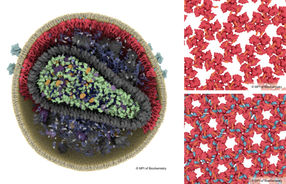450-year-old metal analysed at the nanometre level for finer detail of corrosion mechanism
corrosion products of a 450-year-old archaeological metal were investigated at the nanometre level using scanning transmission x-ray microscopy by scientists in France and Canada. The work is on a much finer scale than others, which usually analyse the microscale with methods like transmission electron microscopy. The study of long term corrosion mechanisms of iron and ferrous alloys can be very useful in the area of conservation and cultural heritage artefacts. It can help set up in situ conservation at archaeological sites. It is also important for designing nuclear waste storage containers, as studying archaeological iron artefacts can be considered analogous to steel containers exposed to the environment for long periods of time.
Most read news
Original publication
Organizations

Get the analytics and lab tech industry in your inbox
By submitting this form you agree that LUMITOS AG will send you the newsletter(s) selected above by email. Your data will not be passed on to third parties. Your data will be stored and processed in accordance with our data protection regulations. LUMITOS may contact you by email for the purpose of advertising or market and opinion surveys. You can revoke your consent at any time without giving reasons to LUMITOS AG, Ernst-Augustin-Str. 2, 12489 Berlin, Germany or by e-mail at revoke@lumitos.com with effect for the future. In addition, each email contains a link to unsubscribe from the corresponding newsletter.

























































